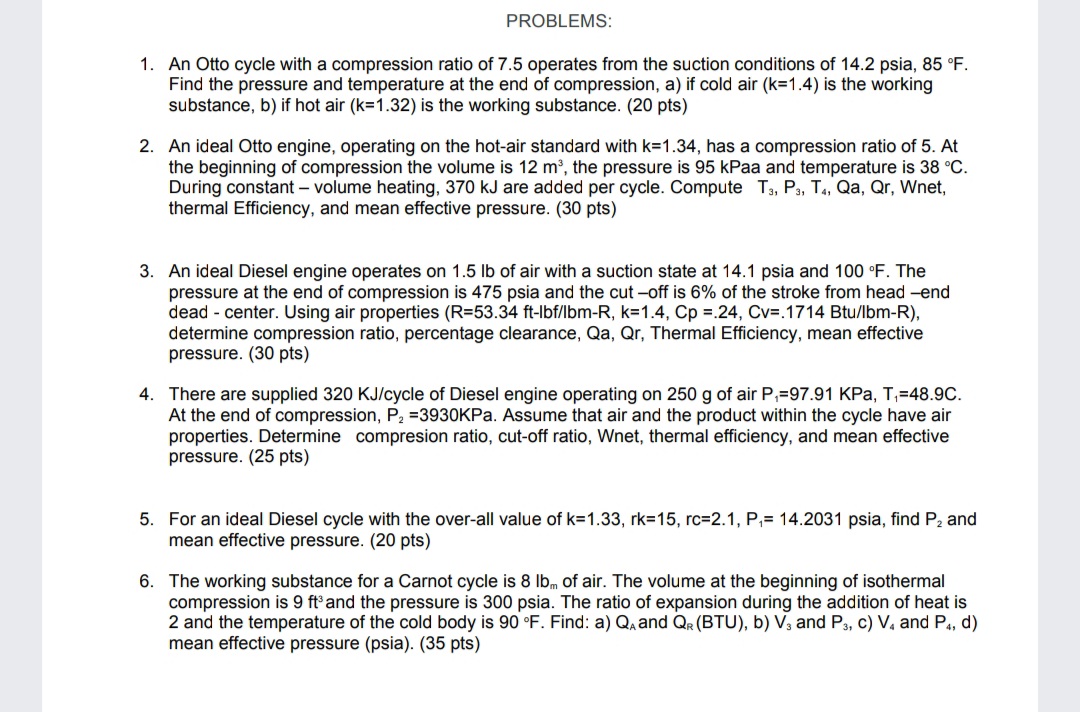An Otto cycle with a compression ratio of 7.5 operates from the suction conditions of 14.2 psia, 85 F Find the pressure and temperature at the end of compression, a) if cold air (k-1.4) is the working substance, b) if hot air (k-1.32) is the working substance.
1. An Otto cycle with a compression ratio of 7.5 operates from the suction conditions of 14.2 psia, 85 F Find the pressure and temperature at the end of compression, a) if cold air (k-1.4) is the working substance, b) if hot air (k-1.32) is the working substance.
2. An ideal Otto engine, operating on the hot-air standard with k-1.34, has a compression ratio of 5. At the beginning of compression the volume is 12 m², the pressure is 95 kPaa and temperature is 38 °C. During constant volume heating, 370 kJ are added per cycle. Compute T₁, P, T, Qa, Qr, Wnet, thermal Efficiency, and mean effective pressure.
3. An ideal Diesel engine operates on 1.5 lb of air with a suction state at 14.1 psia and 100 F. The pressure at the end of compression is 475 psia and the cut-off is 6% of the stroke from head-end dead - center. Using air properties (R-53.34 ft-lbf/lbm-R, k-1.4, Cp 24, Cvs. 1714 Btu/lbm-R), determine compression ratio, percentage clearance, Qa, Qr, Thermal Efficiency, mean effective pressure.
4. There are supplied 320 KJ/cycle of Diesel engine operating on 250 g of air P-97.91 KPa, T-48.9C. At the end of compression, -3930KPa. Assume that air and the product within the cycle have air properties. Determine compresion ratio, cut-off ratio, Wnet, thermal efficiency, and mean effective pressure.
5. For an ideal Diesel cycle with the over-all value of k=1.33, rk-15, rc-2.1, P, 14.2031 psia, find P, and mean effective pressure.
6. The working substance for a Carnot cycle is 8 lb of air. The volume at the beginning of isothermal compression is 9 ft' and the pressure is 300 psia. The ratio of expansion during the addition of heat is 2 and the temperature of the cold body is 90 F. Find: a) Q, and Q. (BTU), b) V, and P₁, c) V. and P., d) mean effective pressure (psia).

Trending now
This is a popular solution!
Step by step
Solved in 4 steps with 5 images









